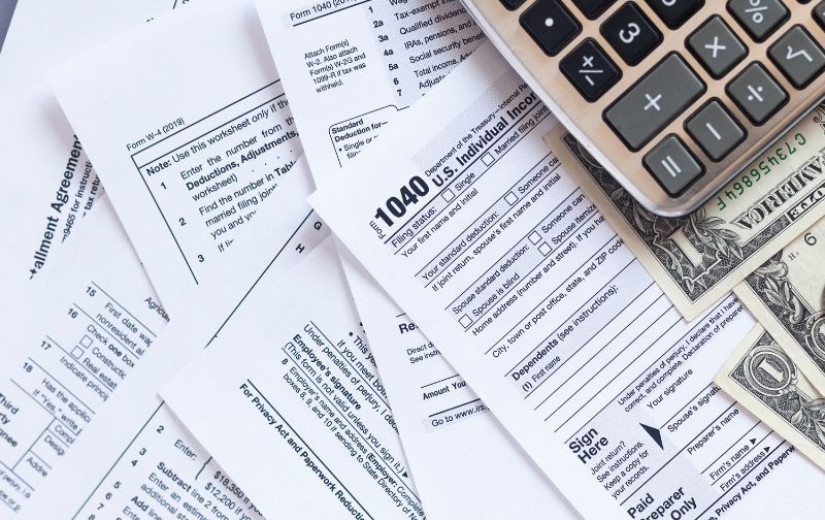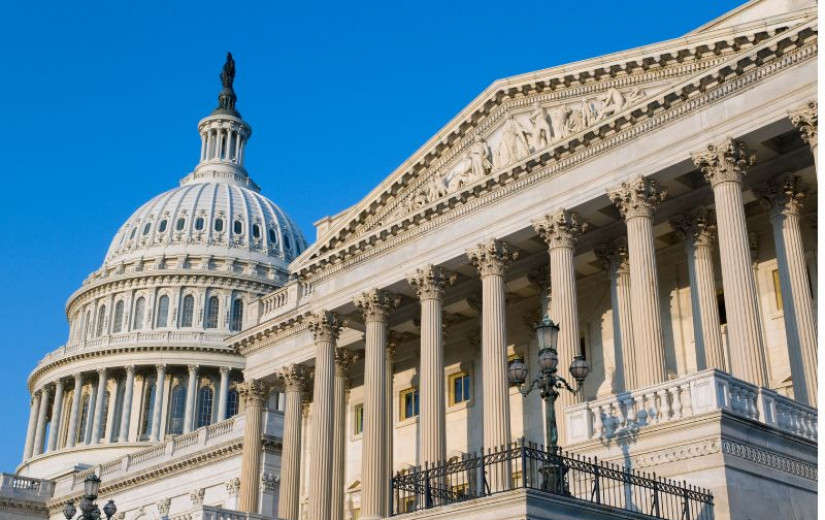
“While the head of the agency finds less than 40% of challenges are possibly worthy of review, the PTAB finds more than 90% are. That dichotomy shows the Director should fully reclaim her institution authority, over both the discretionary and merits aspects.”
 Back in April, IPWatchdog Founder and CEO Gene Quinn interviewed me on his podcast, IPWatchdog Unleashed, where we discussed 10 things U.S. Patent and Trademark Office (USPTO) Acting Director Coke Morgan Stewart could do to fix the Patent Trial and Appeal Board (PTAB) with the stroke of a pen. Gene summarized those suggestions here. Admirably, Acting Director Stewart had already been busy with reforms, and some of the suggestions I made have since come to pass. This article identifies those and follows up on suggestions still to be adopted.
Back in April, IPWatchdog Founder and CEO Gene Quinn interviewed me on his podcast, IPWatchdog Unleashed, where we discussed 10 things U.S. Patent and Trademark Office (USPTO) Acting Director Coke Morgan Stewart could do to fix the Patent Trial and Appeal Board (PTAB) with the stroke of a pen. Gene summarized those suggestions here. Admirably, Acting Director Stewart had already been busy with reforms, and some of the suggestions I made have since come to pass. This article identifies those and follows up on suggestions still to be adopted.
Here are the 10 suggestions, with the current status of each:
1. Fully reclaim institution authority: Started, but more to do.
While Acting Director Stewart previously reclaimed part of her statutory institution authority—the discretionary part—she should still take control of the merits part.
Her action nudged the inter partes review (IPR) process closer to that stated in the statute: the Director decides whether a trial should be conducted by the PTAB. But leaving the merits-based portion of that institution decision with the PTAB results in an odd dichotomy.
Under the new process, the Acting Director has discretionarily denied more than 60% of PTAB Petitions (see p. 18) and referred the remainder (about 40%) to the PTAB to evaluate whether the merits appear sufficient to go forward with review. Upon referral, the PTAB has found more than 90% of the referred Petitions raise sufficient merits. In other words, while the head of the agency finds less than 40% of challenges are possibly worthy of review, the PTAB finds more than 90% are.
That dichotomy shows the Director should fully reclaim her institution authority, over both the discretionary and merits aspects. Having all aspects of the institution decision handled in the Director’s office as provided in the statute has the added advantage of removing the perception of confirmation bias. Rightly or wrongly, inventors often feel it is hard to get Administrative Patent Judges (APJs) to “reverse” themselves during trial after those same APJs have already declared a reasonable likelihood of unpatentability during institution. That perception problem is even worse now that APJs find such likelihood in almost every case referred to them.
It is no secret that, after institution, the PTAB’s “kill rate” is disproportionately high—well over 70%. Some have argued that it is only the “bad” patents that are being challenged, but that theory does not hold up to the practices of the real world. By and large patents are challenged at the PTAB when they are in litigation. In order to be litigated, millions of dollars of resources need to be put into asserting a patent by dozens of patent professionals, all after conducting due diligence. IPWatchdog has discussed this issue before: Patent Monetization: Doing Business as an NPE | IPWatchdog Unleashed. Opponents to strong patent right like to point out a minority of bad actors to justify punishing everyone. Like any area of the law, there are bad actors, but our system of justice does not seek to punish lawful property owners because of bad actors.
2. Eliminate expert witnesses: Started, but more to do.
Acting Director Stewart took a first step by considering petitioners’ reliance on experts to favor discretionary denial of institution. The next step is to eliminate use of experts entirely.
In my experience, the use of expert witnesses creates a huge expense; around a third—or more—of the entire cost of an IPR. Also, rulings often lean heavily on what experts say. This creates a situation where the PTAB trial is about which side has the more persuasive expert witness, rather than on patents and printed publications as required by statute.
There is nothing in the statute requiring the use of expert witness brought by the parties. It was initiated as a practice to help the judges but has since morphed into a central part of the process. The APJs themselves often have the expertise needed to determine the level of one of ordinary skill in the art. If the Director or APJs need additional technical input, there are around 8,000 patent examiners that can assist.
3. Eliminate supplemental preliminary briefing: Still to do.
The original petition should set out the grounds of the challenge, and if it is insufficient then institution should be denied. Period. However, when a Patent Owner Preliminary Response points out a serious defect in the Petition, the PTAB frequently allows the Petitioner to file supplemental briefing and sometimes even additional evidence. The use of supplemental preliminary briefing allows for sloppy petitions to be cured at the patent holder’s expense and creates a mini trial-before-the-trial situation. It is also contrary to the purpose of the institution stage: limiting the burden on the Patent Owner until a trial is instituted.
4. Presume nexus for secondary considerations: Still to do.
Most PTAB decisions are based on obviousness. A cornerstone of this determination is supposed to be whether there are objective indicia of non-obviousness, otherwise known as secondary considerations. Petitioners have the statutory burden of showing in the Petition that an invention is obvious, but in practice the PTAB requires that the patent owner prove the existence of secondary considerations.
Petitioners rarely, if ever, address secondary considerations in their petitions and instead wait until the patent owner has raised the issue in a preliminary response. Petitioners are then given supplemental preliminary briefing to address the issue, which they ignored previously. So, petitioners are able to ignore secondary considerations in a Petition and later argue them after they are raised by the patent owner. This unfairly reverses the burden. If a petitioner does not address secondary conditions in the Petition, and the Patent Owner Preliminary Response submits objective indicia of non-obviousness, then a nexus of such evidence to non-obviousness should be presumed.
5. When evaluating 35 U.S.C. § 325(d), the Office should credit forms 1449 (Information Disclosure Statement) and 892 (Examiner’s List of Cited Art): Done!
6. Terminate VLSI v. Opensky: Still to Do.
7. Eliminate reliance on common knowledge to supply missing limitations: Done!
8. RPX and Unified should disclose list of members: Still to Do.
9. Require petitioners to justify reexam after filing IPRs: Still to Do.
During former Director Iancu’s term, we saw a spike in ex parte reexamination (EPR) requests following the increase in discretionary denials of IPRs based on Fintiv.
Frequently, an unsuccessful challenger repackages its IPR Petition as an EPR request. Under In re Vivint, the Central Reexamination Unit (CRU) is required to apply Section 325(d) and evaluate whether the merits of an EPR request have already been considered by the USPTO. However, the CRU rarely, if ever, credits the PTAB’s consideration of the merits undertaken under Fintiv factor 6.
Now that discretionary denials of IPR are soaring based on a holistic review of all circumstances, including the merits, we expect an even larger spike in follow-on EPR requests. Acting Director Stewart should instruct the CRU to credit her consideration of the merits, even if the decision denying IPR does not provide details of that consideration. Under Section 325(d), the CRU should not be reevaluating the same merits that were already part of her holistic review.
10. Require good reason to upset settled expectations: Done!
A Great Beginning
Acting Director Stewart has done more to make the post-grant patent system fair for inventors than any other USPTO Director, and has only been on the job for eight months. Building on that momentum, I hope the above suggestions are seriously contemplated.
Image Source: Deposit Photos
Image ID: 20332507
Author: iqoncept
Warning & Disclaimer: The pages, articles and comments on IPWatchdog.com do not constitute legal advice, nor do they create any attorney-client relationship. The articles published express the personal opinion and views of the author as of the time of publication and should not be attributed to the author’s employer, clients or the sponsors of IPWatchdog.com.









